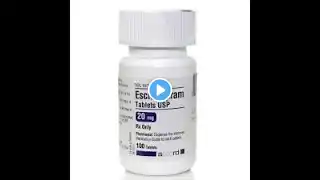
Pharmacology of Escitalopram (Lexapro) ; Mechanism of action, Pharmacokinetics, Uses, Effects
Escitalopram, marketed under the brand name Lexapro, is a selective serotonin reuptake inhibitor (SSRI) used to treat various mental health conditions. Here's an overview of its pharmacology: Mechanism of Action Selective Serotonin Reuptake Inhibition: Escitalopram works by inhibiting the reuptake of serotonin, a neurotransmitter, into presynaptic neurons. This increases the levels of serotonin in the synaptic cleft, enhancing mood and alleviating symptoms of depression and anxiety2. Indications Major Depressive Disorder (MDD): Escitalopram is indicated for the treatment of MDD. Generalized Anxiety Disorder (GAD): It is used to treat GAD. Off-Label Uses: Escitalopram may also be used off-label for conditions such as social anxiety disorder, panic disorder, and obsessive-compulsive disorder (OCD). Dosage and Administration Initial Dose: The typical starting dose for adults is 10 mg per day, taken orally. Maintenance Dose: The dose may be increased gradually, with a maximum dose of 20 mg per day. Adverse Effects Common Side Effects: Include headache, nausea, sexual problems, mild sedation, and trouble sleeping. Serious Side Effects: Include suicidal thoughts in people up to the age of 24 years, serotonin syndrome, and hyponatremia (low sodium levels). Pharmacokinetics Absorption: Escitalopram is well absorbed from the gastrointestinal tract, with an oral bioavailability of about 80%. Protein Binding: Approximately 55-56% of escitalopram is bound to plasma proteins. Metabolism: It is extensively metabolized in the liver by the cytochrome P450 enzymes CYP2C19, CYP3A4, and CYP2D6. Excretion: The metabolites are primarily excreted in the urine (8-10% unchanged) and feces. Half-Life: The elimination half-life of escitalopram is approximately 27-32 hours #Escitalopram #Lexapro